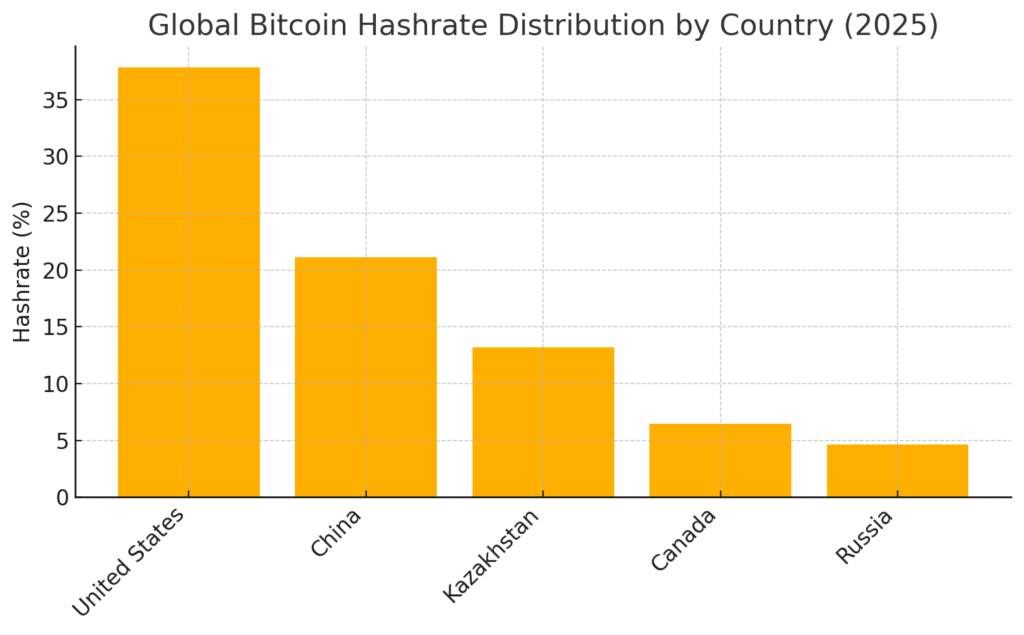
Key Points:
- National Crypto Reserve Launch: Governor Timur Suleimenov announced the creation of a state-run cryptocurrency reserve, funded by seized assets and state-mined coins.
- Governance & Transparency: The reserve will follow sovereign-fund best practices—single management, audited ledgers, secure custody—to shield public assets from volatility and hacks.
- Kazakhstan’s Mining Clout: Home to about 13.22 % of global Bitcoin hashrate, Kazakhstan leverages its cheap energy and has tightened licensing after seizing roughly $200 million in illicit mining equipment in 2022.
- Global Context: The move mirrors U.S. plans for a Strategic Bitcoin Reserve; Texas enacted S.B. 21 on June 22, 2025, and other states like Arizona and Ohio have passed or are considering similar laws.
- Practical Implications: For crypto investors and blockchain practitioners, Kazakhstan’s reserve offers a case study in sovereign adoption of digital assets, potentially influencing asset defense strategies and opening new revenue streams.
1. From Seizure to Sovereign Reserve
Source of Funding
On June 30, 2025, the National Bank of Kazakhstan (NBK) announced plans to establish a national cryptocurrency reserve via a central-bank subsidiary, drawing on digital assets seized in criminal prosecutions and coins mined by state-owned operations. In 2022, regulators confiscated mining rigs valued at approximately $200 million following a nationwide crackdown on unlicensed mining during power shortages.
Legal & Regulatory Framework
The NBK is collaborating with parliament to draft legislation that codifies the reserve’s governance. Governor Suleimenov emphasized alignment with sovereign-fund best practices: centralized authority, transparent accounting, and audited, secure custody of assets. This framework aims to insulate public assets from crypto volatility and cyber risks.
2. Kazakhstan’s Mining Engine
Global Hashrate Position
Kazakhstan ranks third globally for Bitcoin mining, contributing about 13.22 % of network hashrate as of mid-2025.

As shown above, Kazakhstan trails only the U.S. (37.84 %) and China (21.11 %) and outpaces Canada (6.48 %) and Russia (4.66 %) in mining power.
Energy & Licensing
Leveraging abundant coal-fired electricity, the government instituted a strict licensing regime after the January 2022 internet shutdown, which saw the seizure of illegal rigs. These measures balance energy security with environmental concerns and foster a formal mining sector that can feed into the national reserve.
3. Sovereign Crypto Reserves: A Global Trend
United States & Beyond
Following proposals at the federal level, Texas enacted S.B. 21 on June 22, 2025, creating a Strategic Bitcoin Reserve. Other states—Arizona, Ohio—have passed similar laws, while Maryland, Florida, and others are considering actions. Internationally, El Salvador’s government trust and Pakistan’s parliamentary discussions illustrate a growing belief in Bitcoin as a strategic asset.
Implications for Investors
Sovereign reserves signal institutional endorsement of Bitcoin’s store-of-value properties, potentially catalyzing further adoption. For those scouting new crypto assets or revenue models, understanding how governments integrate mined coins and seized assets into reserve portfolios offers practical insights into risk management and asset defense strategies.
4. Practical Utility for Blockchain Adoption
Use Cases & Opportunities
Kazakhstan’s approach exemplifies how public-sector participation can stabilize crypto markets. By institutionalizing asset custody and compliance, the country provides a model for public-private partnerships in blockchain infrastructure—such as regulatory sandboxes recently launched by the NBK to foster fintech innovation.
Revenue Streams
Blockchain developers and service providers can explore partnerships for audit services, custody solutions, and mining-infrastructure projects aligned with sovereign requirements, opening new business lines in asset management and compliance.
Conclusion
Kazakhstan’s national cryptocurrency reserve represents a pioneering fusion of crime-seized assets, state-mined coins, and sovereign-fund governance to integrate digital assets into public finance. By adhering to transparent, audited practices and capitalizing on its substantial mining capacity, the country is charting a course that other nations are likely to follow. For investors seeking the next frontier in crypto assets and practical blockchain applications, Kazakhstan’s blueprint offers valuable lessons in institutional adoption, risk management, and the creation of novel revenue opportunities.

